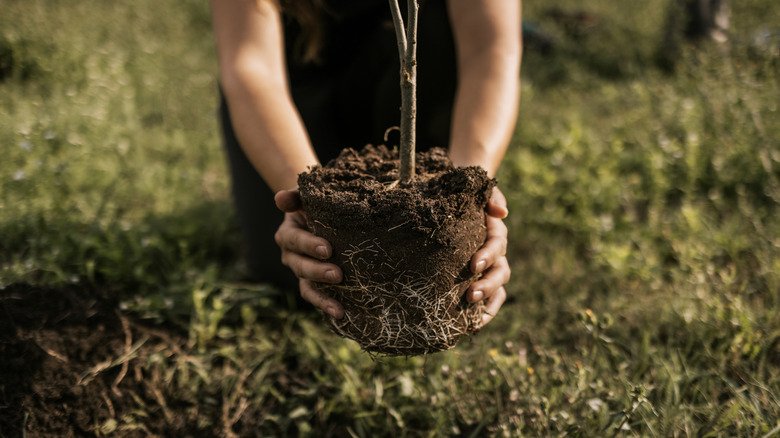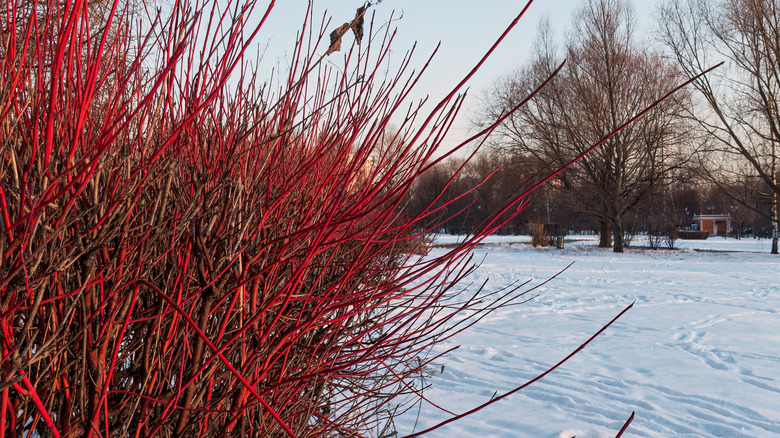The Shrub To Plant In October With Stunning Foliage That Adds A Pop Of Color In Winter
As if the cold weren't unwelcome enough, there's little in the landscape to treat your eyes during the dragging winter months. If you go into mourning once your garden goes dormant, tuck a red-twig dogwood (Cornus sericea) into your yard for year-round appeal. Cornus sericea has a handful of common names, including American dogwood and red-osier dogwood, and thrives in USDA Hardiness Zones 2 to 7. This shrub's ruby-red stems brighten a snowy, colorless landscape.
Red-twig dogwood is an easygoing, easy-growing plant that takes to lots of soil types and climates. It grows quickly, and planting it in October gives the shrub time to stretch out its roots a bit before winter. The shrub will fill anything from a high-altitude property, a coastal landscape, or a rain garden with abundance. Come spring, white, lacy flowers and green buds pop and start the wildlife buffet. The flowers are pollinator magnets, and the shrub itself is a host plant for a handful of specialized bees and spring azure butterfly caterpillars. Birds delight in the white or blue berries that arrive in late summer and fall, and human eyes will delight equally in its autumn leaves that turn cherry red, copper, or deep plum.
Do note that red-twig dogwood might grow a bit too enthusiastically for you; it's listed as invasive in Wisconsin, so if you live in a state with a similar climate, you may want to give it a pass. However, the shrub also grows well in containers. Red-twig dogwood spreads through suckers, and you can cut them back with a shovel in the spring to control spreading.
Plant red-twig dogwood in the fall for winter beauty
Nearly any spot other than deep shade will do for planting red-twig dogwood, but full sun to part shade is ideal; with six to eight hours of sun per day, the shrub's branches will show off a more brilliant red. Although it's similarly adaptable to a variety of soil types, red-twig dogwood will be happiest in moist, fertile soil.
To prepare the site for your red-twig dogwood, dig a hole twice as wide as the root ball. If the soil doesn't drain well, amend it at this time with one or more of these drainage materials to relieve your plants of excess moisture. The hole should be deep enough so that it sits slightly below the surrounding soil line. Gently untangle the roots if necessary before placing the plant in the hole. Fill the remaining space with soil, and give it a generous watering. If you're planting more than one red-twig dogwood, leave at least 2 feet between each plant; some varieties need as much as 15 feet between plants, so seek out the specific needs for the variety you've chosen.
Red-twig dogwood is moisture loving at all times, but after planting, take special care to keep your shrub well-watered so it will become established before dormancy. You don't need to fertilize your shrub. With a bit of pruning in spring to spark new growth, the youngest branches will regale you with the reddest hues.

